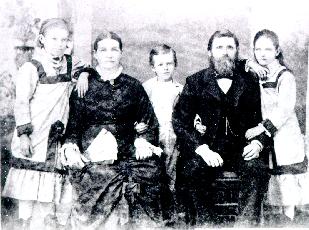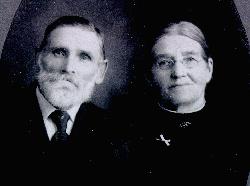The Teens and Early Adult Years
In 1886 when Aunt Minnie was 17, Mama 16, and Uncle Joe 15, a devastating earthquake struck the city of Charleston, S.C., and demolished a great part of that city. The quake occurred in the early part of the night and was so heavy that the tremors were felt as far south as Orlando. Mama and Aunt Minnie had gone upstairs to prepare for the night. In fact Aunt Minnie was in bed and Mama was saying her prayers at the side of the bed when Aunt Minnie said, "Elida stop shaking the bed." In all innocence Mama replied, "I am not shaking the bed, it´s the house that Is shaking." Just to show how slow communications were at that time it took three days for the news to reach Oviedo via the Jacksonville newspapers and the bed shaking episode was explained.
As I mentioned in the beginning, the choice of Florida as a place In which to live proved to be fortunate for us as would we be here if Illinois had been chosen?
At some time in the 1870's the Nelson family who had emigrated from Sweden and had first settled in Connecticut moved to Oviedo and In the year 1882 the Edgar family emigrated from England and settled in Oviedo. The three families became close friends and shared many pleasant times with one another.
As the relationship between the Wahlstrom, Nelson, and Edgar families became so intertwined, I believe It Is fitting at this point to insert the following: Our father and Grandfather Edgar left England in 1882 en route to Australia via New York and San Francisco but on their arrival In New York they encountered and succumbed to the same line of salesmanship by a representative from Florida, as had our maternal grandfather in 1870, and settled in Oviedo and established a foundry and machine shop business. Our paternal grandfather then returned to England and moved the entire family to Oviedo. During that same year Grandfather and Grandmother Edgar returned to England accompanied by Aunt May and Uncle Alfred, one of their daughters and a son. Aunt May was married while they were there and Uncle Alfred resumed the career he had left and except, for occasional visits to the U.S.ned in England for the balance of their lives.
Upon their return to Oviedo grandfather decided that the town was too small to sustain a foundry and machine shop and early in 1884 moved to Sanford the county seat of Orange County located about ten miles N.W. of Oviedo, and Uncle Gus Nelson who was working with them continued to live in Oviedo and later went back to them.
The Nelson family had an orange grove and also a packing house in Oviedo from which oranges were shipped all over the U.S. The three sons, Gustaf, Fred, and Steen, operated this even while Uncle Gus was working with the Edgar's.
As this is not really a family history but a rambling narrative, I feel it will not be amiss to inject a bit of humour at this point. Grandmother Nelson was very irritating to our Grandmother Wahlstrom at times which Is only human nature showing forth. It seems that she was constantly saying she was descended from the Swedish aristocracy, and one day when Grandmother Wahlstrom was fed up with her, she made the fatal mistake of asking her from what aristokratic house did she trace her lineage. Without changing her facial expression Mor Mor answered in what I am sure was a dialect that Grandmother Nelson did not know, "from the house of ?" which freely translated means "the house of the wooden shoe", but this was accepted even though Grandmother Nelson said she had never heard of it and from then on nothing was said about aristocracy. Note 6
The Years of Adulthood, Marriage and Families
In May, 1888 Aunt Minnie was married to Uncle Gus Nelson. There were four children from this marriage:

